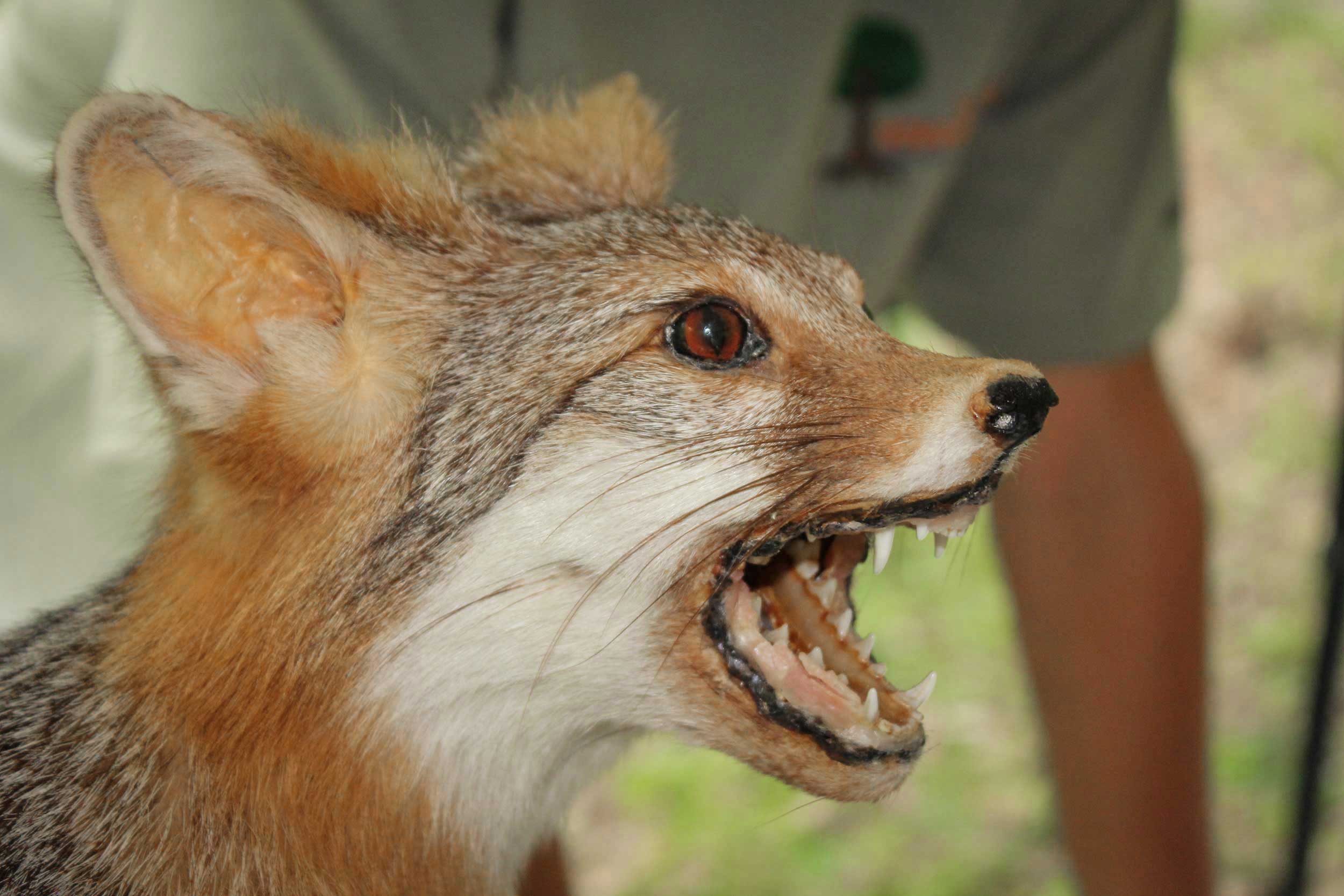
Wildlife

Knowledge of Wild Birds, Mammals, and Herps
Learning Objectives
- Identify wildlife species using mounted specimens, skins/pelts, pictures, skulls, silhouettes, decoys, wings (waterfowl), scats, tracks, animal sounds, or other common signs. Animal tracks may be original or molds made of the prints. Wildlife signs may be real or reproduced.
- Use a key or field guide to identify wildlife species or signs. Wildlife species or signs may be presented in any form as described above.
- Identify general food habits (herbivore, omnivore, carnivore), habitats (terrestrial, aquatic, fossorial), and habits (diurnal, nocturnal) using skull morphology and/or teeth.
Recommended Resources
- Texas Birds - Introducing Texans to Common Birds
- Mammals of Texas (PPT)
- The Mammals of Texas Online Edition
- Mammal Skulls (PPT)
- Texas Tracks: Do You Know Them?
- OA Guide to Animal Tracking
- Amphibian Life History (PPT)
- Frogs and Toads of Texas (Calls)
- A Guide to Common Frogs Across Texas (PPT)
- Backyard Guide to Common Bees in Houston
- Common Houston Butterflies
- Whooping Cranes
- Purple Martins
Wildlife Ecology
Learning Objectives
- Know the meaning of "habitat", and be able to name the habitat requirements for wildlife and the factors that affect wildlife suitability.
- Know and understand basic ecological concepts and terminology.
- Understand the difference between an ecosystem, community and population. Be able to explain how communities interact with their non-living surroundings to form ecosystems.
- Understand wildlife population dynamics such as birth, mortality, age-structure, sex ratio, and mating systems. Understand the impact of limiting and decimating factors of common wildlife species on wildlife management.
- Recognize that all living things must be well-adapted to their native environment in order to survive. Be able to identify, describe and explain the advantages of specific anatomical, physiological and/or behavioral adaptations of wildlife to their environment.
- Know the meaning of the term "Biodiversity", and understand why biodiversity is important to people and wildlife.
- Understand the importance of the three levels of biodiversity: genetics, species and ecosystem or community, and understand the implications of biodiversity loss at each level.
Conservation and Management of Wildlife
Learning Objectives
- Know the preferred habitat types and specific habitat requirements of common wildlife species. Understand how this knowledge helps us to better protect both the land and the wildlife species that depend on it.
- Understand the difference between biological and cultural carrying capacity, and be able to identify social and ecological considerations where human use of land conflicts with wildlife habitat needs.
- Identify common wildlife management practices and methods that are being used to manage and improve wildlife habitat.
- Understand the role of federal, state and provincial Fish and Wildlife Agencies in the management, conservation, protection, and enhancement of fish and wildlife and their habitats.
- Know that all states and provinces have a hunting safety course and mandatory hunter education program developed specifically for each state or provincial government's hunting and wildlife agency.
Issues Involving Wildlife and Society
Learning Objectives
- Understand how non-native (exotic), invasive species threaten our environment and the biodiversity of many wildlife species. Understand that non-native (exotic), invasive plants impact wildlife habitat and thus have a tremendous impact on native wildlife.
- Learn about the complexities of decision-making in making land use decisions that affect wildlife, and understand that wildlife resources are under constant pressure caused by human population growth, environmental degradation, and habitat reduction.
- Know that Wildlife species are subject to diseases resulting from exposure to microbes, parasites, toxins, and other biological and physical agents.
- Understand the terminology and factors that affect threatened and endangered wildlife species. Know the meaning of extinct, extirpated, endangered, threatened, candidate species and reintroduction.
- Identify the characteristics that many extinct and endangered species possess, and be able to identify many species wildlife that are endangered and threatened.
- Understand the role of the Endangered Species Act in helping to conserve endangered and threatened species. Know the organizations and agencies responsible for listing and protecting endangered species on global, federal, state and provincial levels.
Recommended Resources
- New for 2024 Endangered Species Act 50th Anniversary
- Endangered Species Act Basics
- Climate Change and Migratory Birds
Recommended Reading
Reference Materials
- Wildlife Presentation (PPT)






